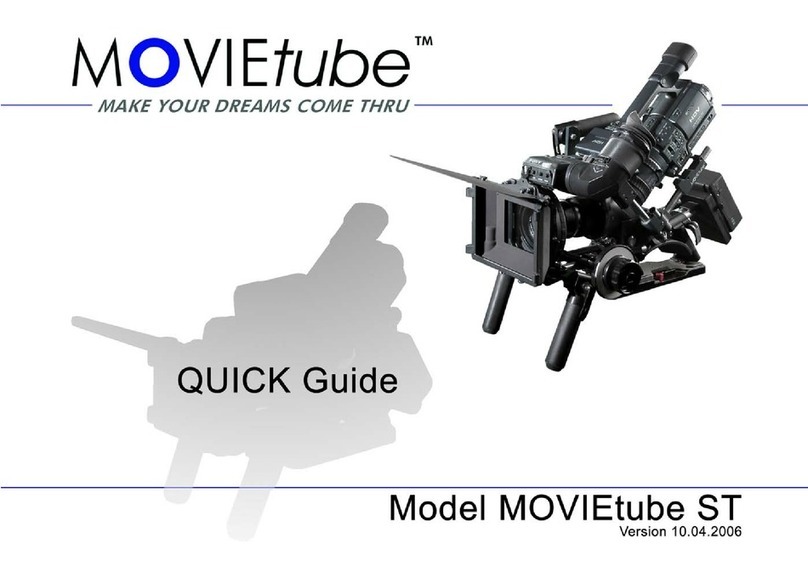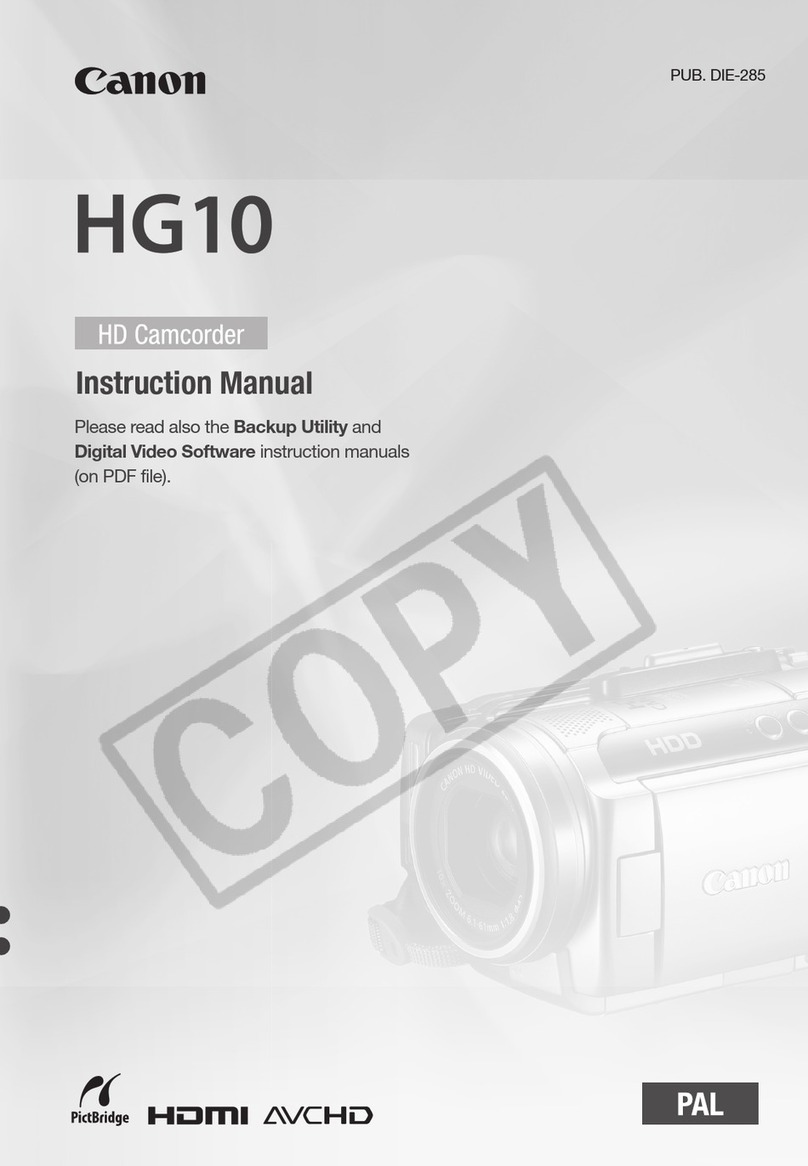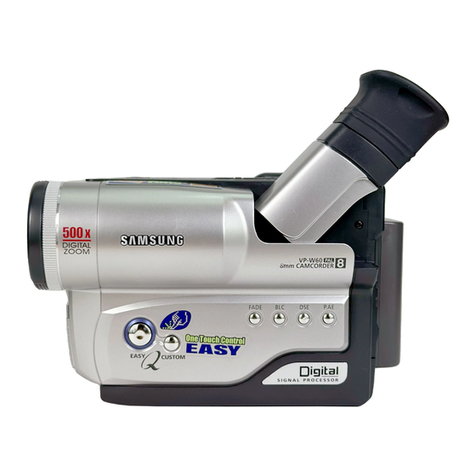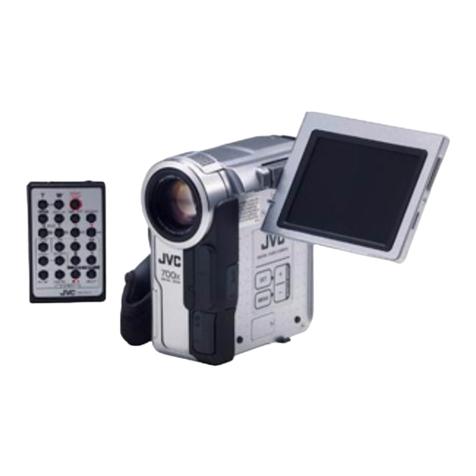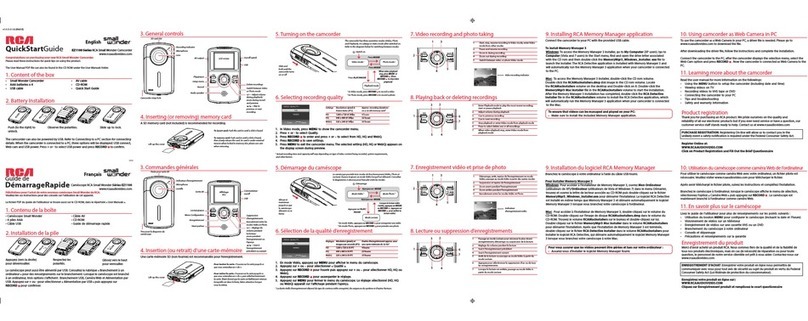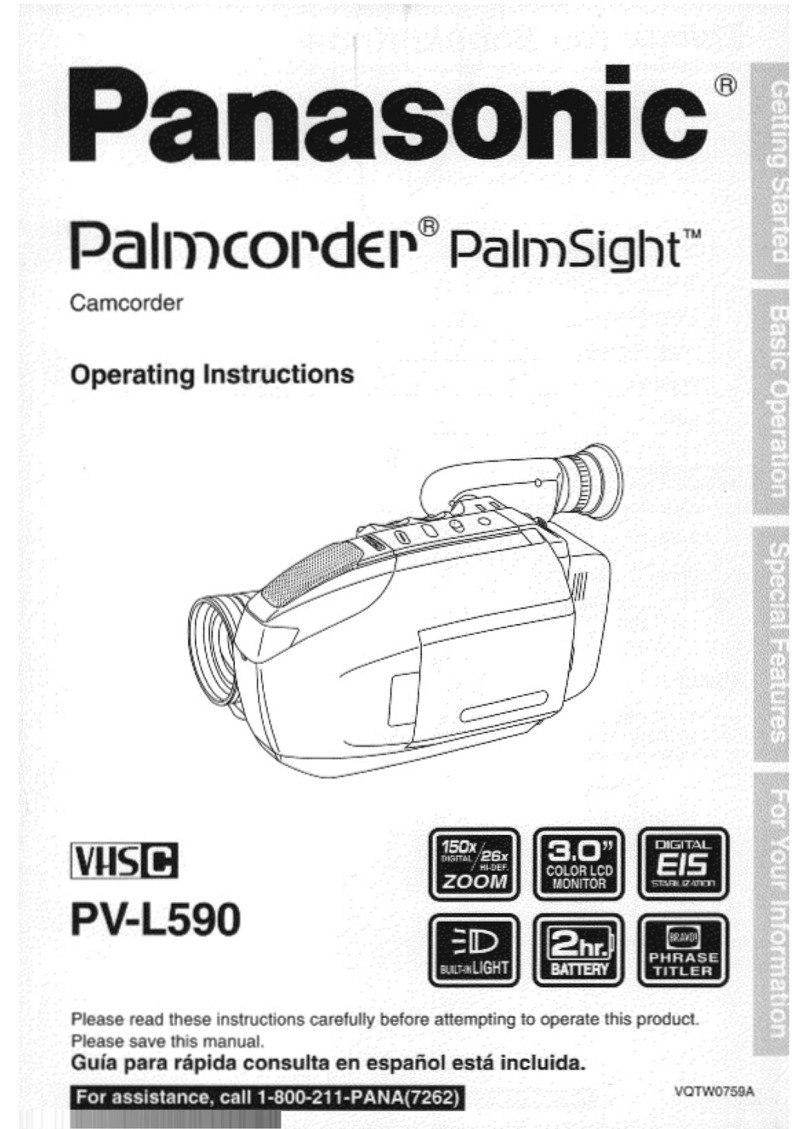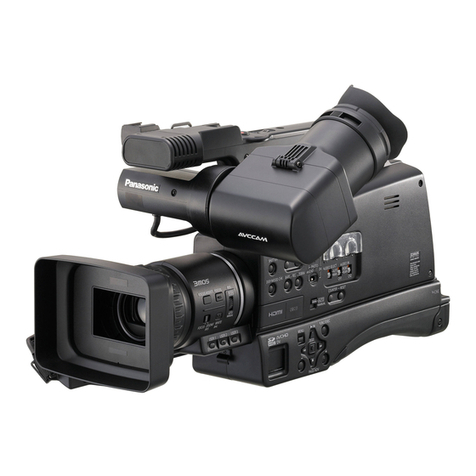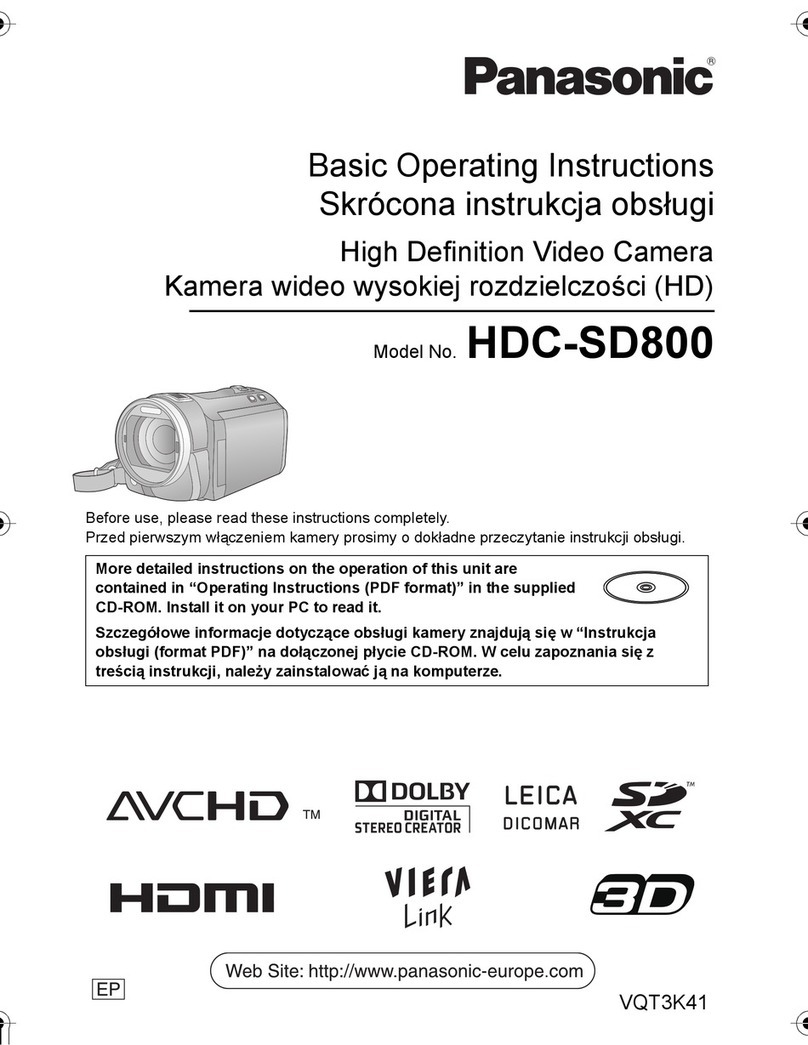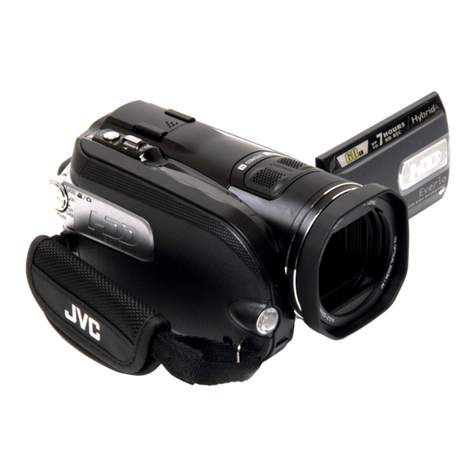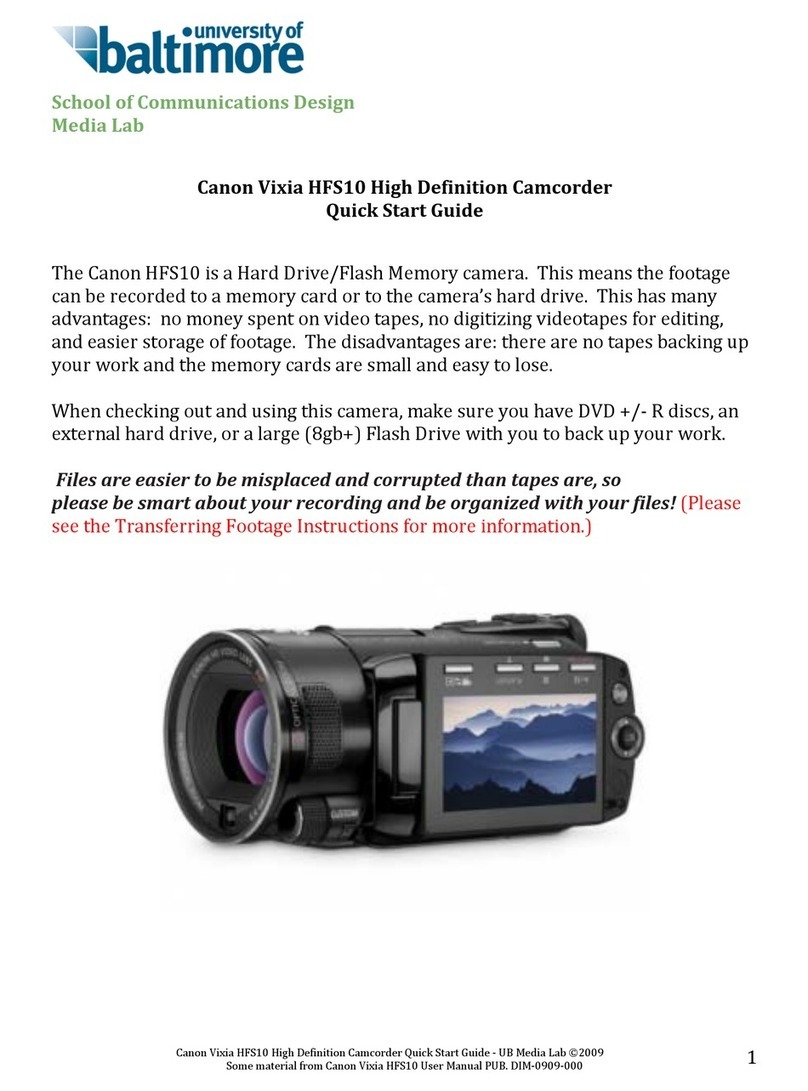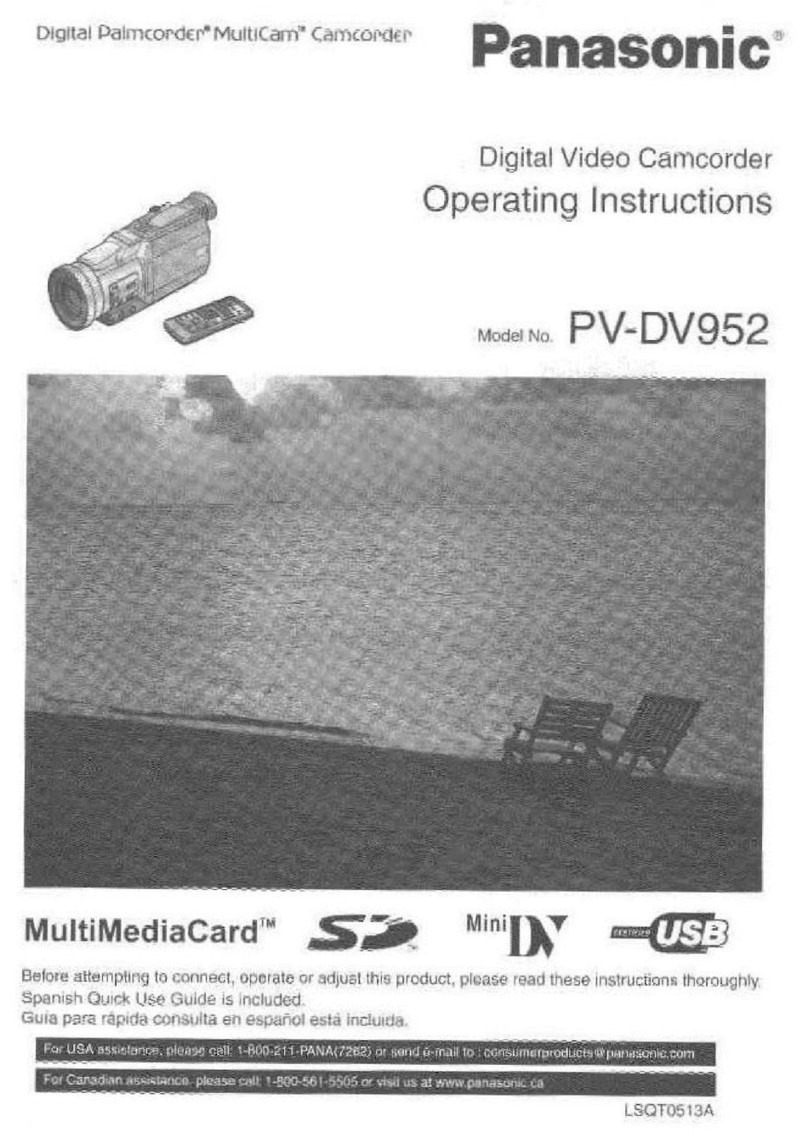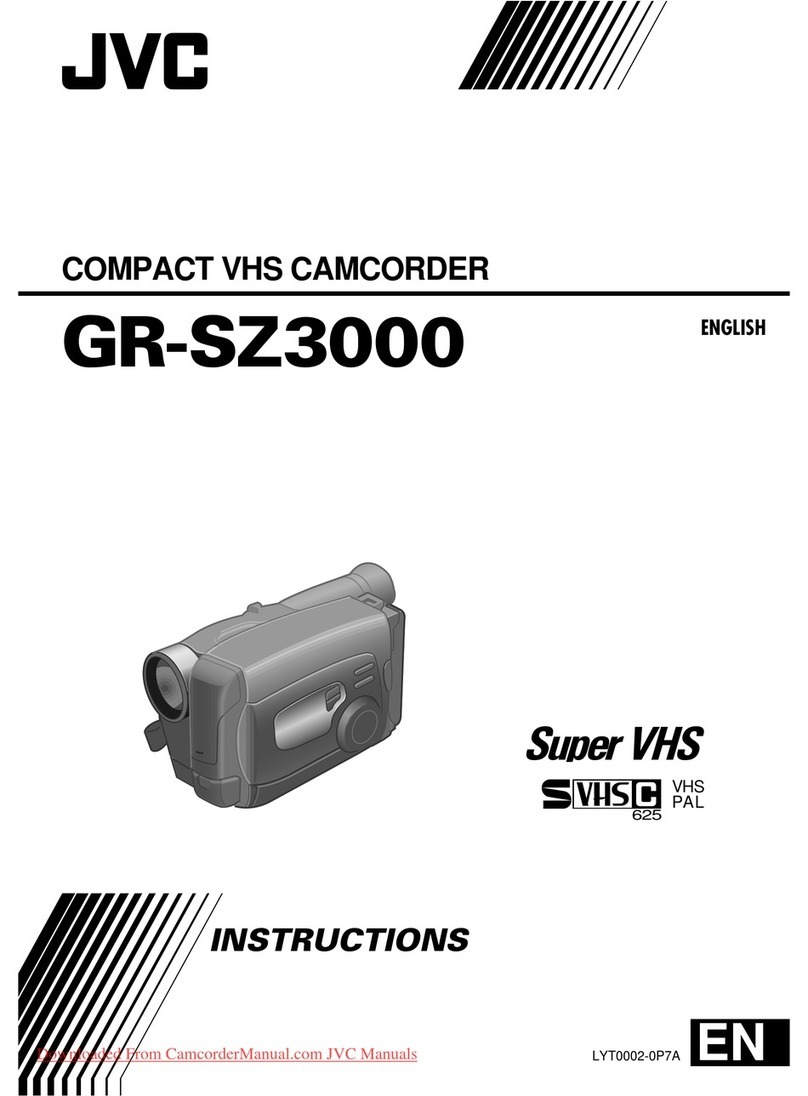MOVIEtube LT Series User manual


2
Congratulations!
Thank you for purchasing a MOVIEtube LT 35mm camera system.
MOVIEtube LT provides the same depth of field and viewing angel as the S-35mm Cinema format for digital video.
With this excellent tool you are able to produce a “filmlook” on video without the cost of real film.
The MOVIEtube product line is made out of the finest materials and is a masterpiece of optical & mechanical engineering made in Wetzlar/ Germany. The
town where in 1914 the first worldfamous Leica cameras where developed by Oskar Bamark.
In this tradition it’s rigid body and parts are milled out of massive aluminum to provide maximum strength and durability.
Read this manual carefully to learn about the power of MOVIEtube.
We hope you enjoy shooting with MOVIEtube LT, as much as we enjoyed developing it. -MOVIEtube Team-
A product by KINOMATIK – Technology for motion pictures.
•MOVIEtube Camera System
The modular 35mm digital video camera system provides the same depth of field and viewing angle as the 35mm
film cinema format.
•LENS Mount
Cinematography lenses from Arri and Panavision, as well as photo lenses from Nikon, Canon, Minolta, Pentax,
Contax, Leica and Yassica / Olympus can be used with the appropriate lens mount.
•INTERMEDIATE Image
MOVIEtube offers a scaleable intermediate image to support the film formats 35mm as well as 16mm. Therefore
all 16mm and 35mm lenses can be used. The different gate sizes can be archived by simply zooming the docking
camera as needed.
•MOVIEtube Filmscreen
Because of its microcrystalline technology, the patented intermediate filmscreen does not need to rotate, which
results in excellent detail resolution and a sharper image with no hotspot or dark corners, even with very wide
angle lenses. Also it is possible to stop down to T 5.6, and no high speed lenses are needed (although
recommended).
•DOCKING Cameras
The intermediate image is found at infinity, to enable easy focusing of the docking cameras without additional
close-up lenses. Simply attach the docking camera to the docking sled, adjust the quick release handle, as well as
making any vernier adjustment to the lens.

3

4
Contents
• Congratulations/ General infos.…………………………………………………………………………… 2
• Contents………………………………………………………….…………………………………………. 4
• Delivery content – basic module…………………………………….…………………………………… 5
• MOVIEtube LT accessoires………………………………………………………………………………. 6
• General description…………………………………………………………........………………………... 7-12
• Frequently Asked Questions……….……………………………………………................................... 13-15
• Light Weight support & LT Stand ……………… …………………………………………………..….. 16
• Docking Bridge adjustment………………………………………………………………………….....…. 17-19
• Checking the gate……………..……………………………………………………………………..…….. 20
• Lens mounts & lenses…………… ……………………………..………………………………………… 21
• Shooting with SONY PD150 / PD170 / PD100 / PDX10 / TRV900 / TRV950 / TRV 890……...…… 22-28
• Shooting with SONY HDR-FX1 / HVR-Z1………………………………………………………….……. 29-35
• Shooting with Panasonic AG-DVX 100………………………………………………………………….. 36-42
• Shooting with Panasonic AG-HVX 200………………………………………………………………….. 43-49
• Preparation / 12 Golden Rules for shooting with MOVIEtube…………………………………………. 50-51
• MOVIEtube approved docking cameras…………………………………………………………………. 52

5
Delivery content – MOVIEtube basic module
A) Docking Bridge
For attaching and adjusting the docking camera
B) Camera sled
Attaching the docking camera to the ocular
C) Ocular cap
Protection cap for the ocular
D) Support interface for 15mm LWS
system
15mm rods for standard video accessories

6
MOVIEtube LT accessoires
A) 15mm light weight support
The 15mm LWS system accepts all film style
accessoires including follow focus and matte
boxes
B) MOVIEtube LT Stand
The MOVIEtube LT Stand provides ¼ " and 3/8 "
attachment points allowing the use of all industry
standard tripods, bridge plates and other support
systems e.g. Steadicam
C) LENS mount incl. cap
Cinematography lenses from Arri and
Panavision, as well as photo lenses from Nikon,
Canon, Minolta, Pentax, Contax, Leica,Yassica /
Olympus and M42 can be used with the
appropriate lens mount
MOVIEtube LT accessoires are pre mounted
when ordered together with MOVIEtube basic
module

7
General description
MOVIEtube LT front
For attaching and adjusting
the docking camera
Docking bridgeC
Never unscrew!Protection filterD
With ¼ " screw to attach
the docking camera
Docking camera tableE
15mm rods for standard
video equipment
Leight weight supportB
For attaching the bayonet
adapter
Bayonet ringA
CommentDescriptionPOS.

8
General description
MOVIEtube LT Side
To connect to
cinematography lenses as
well as photo lenses
Bayonet adapterD
Quick release for z-axis
adjustment of docking
camera
Quick release handleE
Knob for fine adjustment z-
axis
Fine adjustment
knob
F
To adjust the position of
the camera to the ocular
Docking camera sledB
Connects to the docking
camera lens
OcularC
With ¼ " screw to attach
the docking camera
Docking camera tableA
CommentDescriptionPOS.

9
General description
MOVIEtube LT back
Connects to the
docking camera lens
OcularC
Anti friction soft rubber
to fix the docking
camera lens
Ocular rubberD
With ¼ " screw for
attaching docking
camera
Docking camera tableB
Attaching the docking
camera to the ocular
Docking camera sledA
CommentDescriptionPOS.

10
General description
Docking camera sled
Fine adjusting for y-axis
of docking camera
Fine adjusting knobB
Quick release for x-axis
adjustment of docking
camera
Quick release
handle
A
CommentDescriptionPOS.

11
General description
Bridgeplate
For releasing sliding LT
stand
Beltlock screw standB
For releasing sliding
15mm rods
Beltlock screw bodyA
CommentDescriptionPOS.

12
General description
z-axis adjustment
Knob for fine
adjustment z-axis
Fine adjustment
knob
B
Quick release for z-axis
adjustment
Quick release
handle
A
CommentDescriptionPOS.

13
Frequently Asked Questions
1. Q: Is MOVIEtube going to accept cameras like
Canon XL-2 as well as cameras with
non removable zoom lenses?
A: At the moment only cameras with non-
removable Zoom lenses are supported. So
Canon XL-2 /X-L1 does not work with
MOVIEtube. Check MOVIEtube/ docking
cameras on our webpage, to see which kind of
cameras are approved MOVIEtube docking
cameras.
2. Q: I learned that it has an image size like in
Super 35mm, but can you vary the image size in
it ?
(I have a nice set of Mamiya 645 manual lenses
and of course it would be nice to use that format
as well.)
A: The gate size of the MOVIEtube image is
S-35mm (18mm x 24mm). It's scalable
to a 16mm (7,4mm x 10,4mm) gate by zooming
the DV-Camera in more. Therefore all other sizes
between S-35mm and 16mm can be achieved.
With this benefit you are able to change your
angle of view quickly before or while shooting,
even though you use a Prime Lens. The widest
gate size MOVIEtube can do, is 22mm x 28mm,
that is between S-35mm and SLR gate. You
have to place a
special order, if you want the big gate, and we'll
widen it up for you to 22mm x 28mm. Of course
the Mamiya 645 Lenses, and all other middle
format lenses, are big enough to illuminate a S-
35mm Gate. You can use like SLR Lenses with
an appropriate Lens-adapter which can be
purchased from KINOMATIK.
3 Q: Can I upgrade my MOVIEtube Light?
A: MOVIEtube LT can be fully upgraded to a
MOVIEtube ST system
4. Q: Can I use old Arri standard lenses (front 49
mm, I have Cooke's and Zeiss lenses) or Arri high
speed lenses (my 35mm lense serie is mark I
type)?
A: MOVIEtube doesn`t need high speed lenses to
achieve bright corners, any standard lens will
work. Old Arri-Standard Lenses work too, you just
need an adapter (Pl-Ring-mount) on the lens, so
that it will be accepted by our Arri-PL Mount. Can
be purchased from Optex.
5. Q: When using the nikon lens adapter, can the
nikon lens iris be controlled with the aperture-ring
on the lens?
A: Yes, any Nikon Lens can be controlled
manually, as you would do on an Arri or
Panavison Lens. This means zoom, focus and iris
can by regulated by hand while shooting.
Restriction: The focus on Nikon Lenses is turning
the “wrong” way. Infinity is reached by turning the
focus ring clockwise.
All photo lenses, except the Canon EOS Lenses
can be manually focused and stopped up/ down.
Canon EOS Lenses can be used with open
aparture only, because lack of focus ring on the
lens. There are three restrictions to photo lenses.
First: The Iris will snap in 1/3, ½ or Full Stops and
is not to be controlled seamlessly. Second: It´s
not possible to attach a Follow-Focus-Unit to the
lense, until it has no focus gear ring on the focus-
ring. Note: Flexible Gear rings to attach on photo
lenses can be purchased by KINOMATIK in the
future.Third: Autofocus Lenses do not
operate as smooth as manual Lenses.

14
Frequently Asked Questions
6. Q: Is the image captured by the camera upside-
down and/or mirrored?
A: The image is right side up. (A prism is inside
the MOVIEtube)
7. Q: What is the weight of MOVIEtube LT (without
Camera and accessoirs)
A: As the name implies, the MOVIEtube LT is the
Light weight Version of the product line. It weighs
3.9kg (8,6 lbs) and makes the LT a perfect match
for Cranes, smaller Steadicam live action and for
all other situations where a small, fexible and
lightweight camera system is appropriate.
8. Q: I am wondering what your present
developments are for these larger 72mm
Cameras!
A: To support the larger lensed Cameras, we
increased all optical parts in our MOVIEtube
system to wider diameters. Movietube now works
with wide and of course smaller lenses.
9. Q: Does MOVIEtube Light need it's own power
supply?
A: The intermediate imagin prozess inside the
Image tube needs no electrical power and will
work worry-free even in extreme conditions.Of
course the attached docking camera will need it’s
own battery as usual.
10. Q: Is MOVIEtube LT (MOVIEtube ST) noisy?
A: The MOVIEtube cameras are fully optical. No
electrical power is needed for generating the
image.Therfore it’s operating completely silently.
The only thing you might hear is the tape running
in the docking camera or your focus puller’s
moaning because of the small dept of field.
11. Q: Is the technical image quality different if it is
zoomed in to 16mm (7,4mm x10,4mm) image. In
other words: Can I for example shoot different
formats or zoom from S-35mm to 16mm in the
same shot without noticing it in the monitor?
A: It’s like with chemical film. Because of it’s
bigger size, S-35mm has a better quality than
16mm. Using the S-35mm Gate will yield better
detail resolution, and the grain is not as big. As in
every chemical film production, different
materials with different sensitivity and therefore
different detail resolution and grain, is mixed, it´s
possible with Movietube, too. Note: Quality of
Lenses and different Gate sizes should be tested
before shooting. It’s the Filmmakers decision
after all.
12. Q: What kind of technology is there to remove
the grain of the glass where the image is
projected?
A: Because of its microcrystalline technology, the
patented MOVIEtube Filmscreen does not rotate,
which results in excellent detail resolution and a
sharper image with no hotspot or dark corners,
even with very wide-angle lenses. Depending on
the shot it’s possible to fully close the iris, without
seeing any rotating grain. Use the shutter of your
choice, do your camera movements with any
speed and create your shots with different frame
rates - just as you like.

15
Frequently Asked Questions
13. Q: It seems to me that the rods are the same
size as used with Aaton and Broadcast Video
Cameras, so I could use my own longer rods?
A: Yes, MOVIEtube LT is equiped with 15mm
standard rods, distance 60mm (center/ center).It
can be used with every light weight support
equipment and it’s exchangeable with rods of
other length or material. The MOVIEtube ST
comes with both, 15mm light weight support
and a 19mm interface with cine standard rods
for film style gear.
14. Q: Does the ¼ “ screw of the camera mounting
table fits to every docking-camera?
A: We found some differences between
Panasonic and Sony models. For some models
you need a longer screws for example use ¼ “
Manfrotto screws. Attention: If you use a longer
screw in a shorter ¼ “ camera mount you may
brake through the mount and damage the
electronic of the camera. In that case shorten
the screw while using a washer between the
screw head and the bottom of the camera
mounting cable.

16
Light weight support & LT stand
1. MOVIEtube LT light weight support (LWS)
Loosen screw with 2.5mm hex wrench on the LWS interface
insert rods.
Make sure that the rods overlap about 10mm on the back
then tighten the screws gently.
2. MOVIEtube LT Stand
Loosen screws with 2.5mm hex wrench on the stand
insert stand on rods.
Tighten screws gently.
3. Connection Points
The MOVIEtube LT Stand provides ¼ " and 3/8 " threads for connecting the MOVIEtube Light to tripods, cranes,
steadycam and other support equipment.

17
Docking Bridge Adjustment
The DV-Camera can be adjusted with the Docking Bridge in several ways
1. Left / right adjustment
The DV Camera can be adjusted from left to right by turning the side to side screws on the camera sled. See first picture
below
2. Back and forth adjustment
The DV Camera can be adjusted from front to back by loosening the quick release handle on the camera sled.
Attention: Prevent the camera from accidently sliding towards the ocular or of the rods by holding it while loosening
the quick release handle
3. UP and down adjustment
DV Camera can be adjusted from up to down by loosening the quick release handle on the docking bridge. To do any up
and down vernier adjustments, turn the up and down screw.

18
Docking Bridge Adjustment
The DV-Camera can be adjusted with the Docking Bridge in several ways
4. Special: Lowering the camera mount
For some cameras it might be necessary to lower the camera sled more than the up and down adjustments can move. In
that case loosen the screws left and right of the docking bridge as well as the up and down quick release handle. Push the
small tubes down till they reach the tube mount. Tighten all again.
Do so without the DV camera being mounted.

19
Docking Bridge Adjustment
The DV-Camera can be adjusted with the Docking Bridge in several ways
5. Not every camera has its optical axis parallel to its mounting plate or housing.
To adjust the angle of the DV-Camera to the ocular insert, spacers such as paper (Carton) completely between the camera
table and the rubber. Choose the spacers thickness according to your needs. See picture 1 and 2 below.
After that simply attach the docking camera on the docking sled, tighten the ¼ " thread screw and adjust the quick release
handle, as well as making any vernier adjustments to the lens.

20
Checking the gate
Frequently check the gate for dust and dirt.
To do so point the MOVIEtube to a homogenous bright background or use a white card. Dust and
dirt can be detected better by paning the camera.
Remove any dust on the protection filter with a lens brush or compressed air. Do this in a clean
environment.
Never unscrew the protection filter ! Doing so will invalidate your guarantee !
Table of contents
Other MOVIEtube Camcorder manuals
Popular Camcorder manuals by other brands
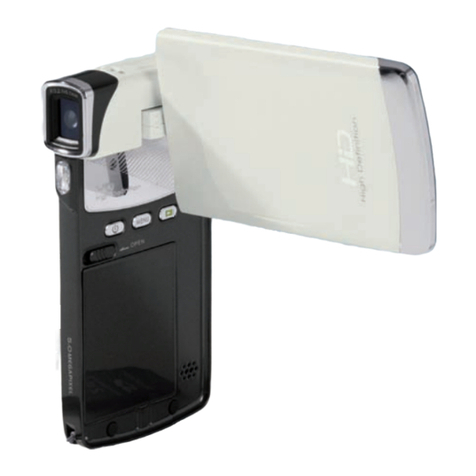
Silvercrest
Silvercrest DV-5200HD User manual and service information

MediaTech
MediaTech MT4039 TRINIUM HD user manual
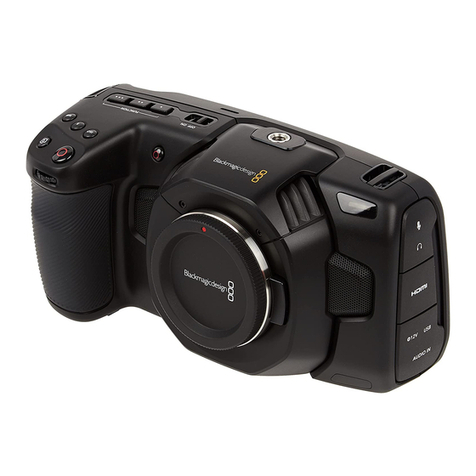
Blackmagicdesign
Blackmagicdesign Pocket Cinema Camera 4K User's installation and operation manual
Easypix
Easypix 5 Mega Pixel user manual
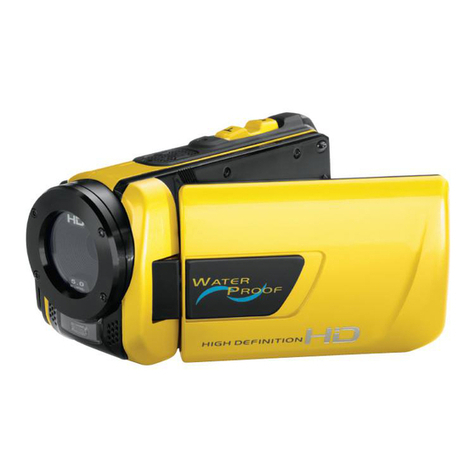
Silvercrest
Silvercrest SCAW 5.00 B2 User manual and service information
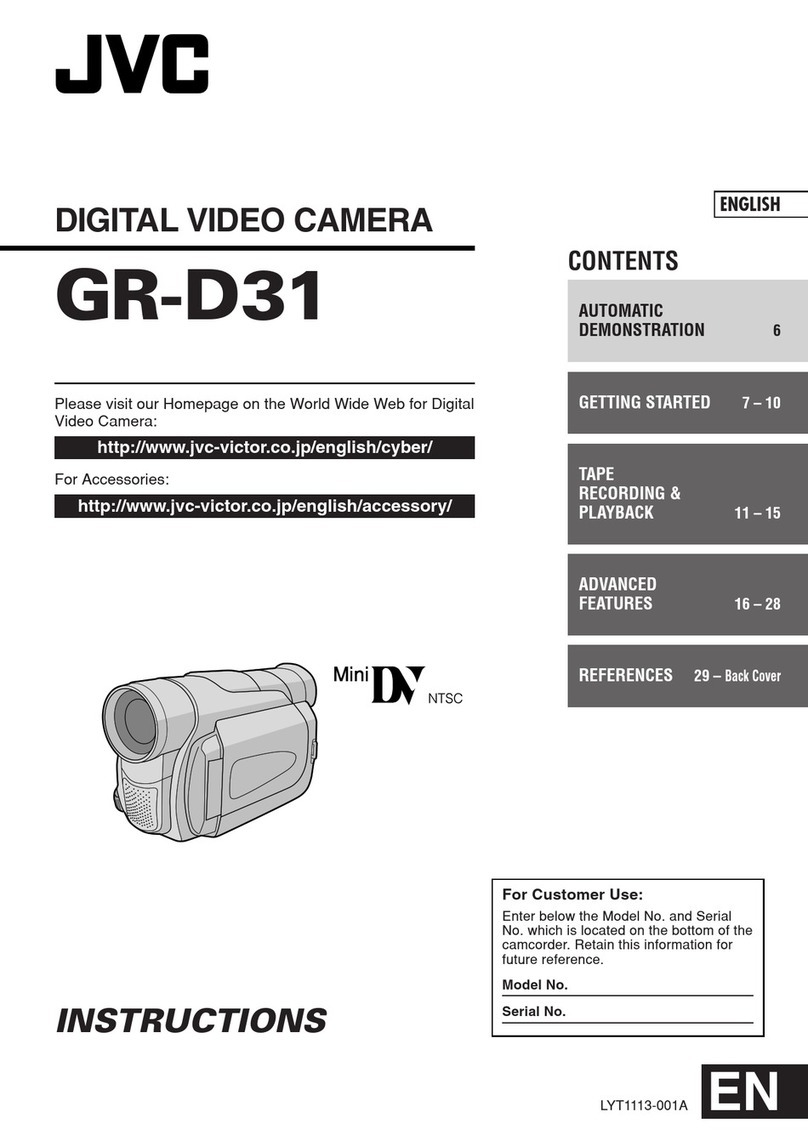
JVC
JVC GR-D31US instructions
